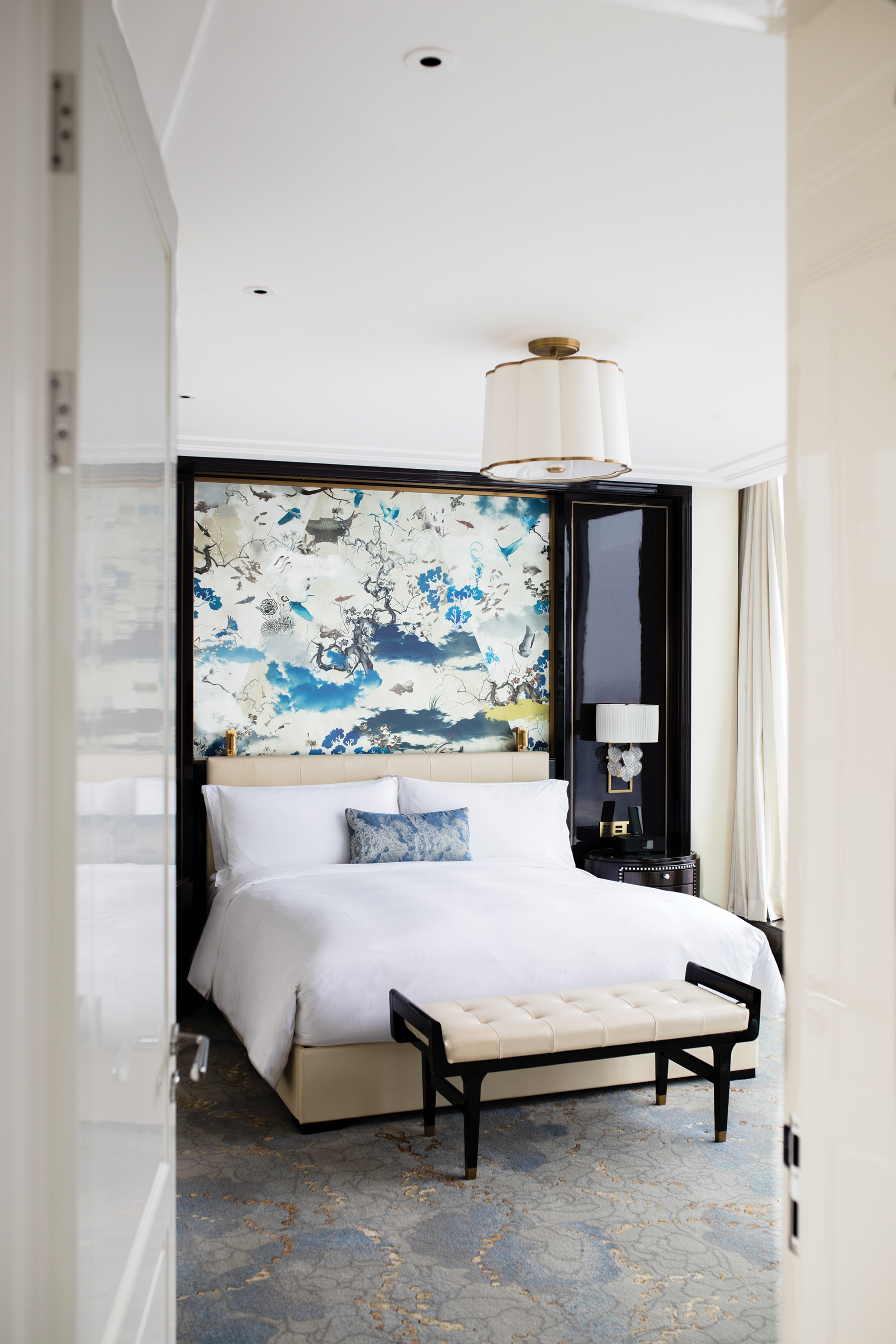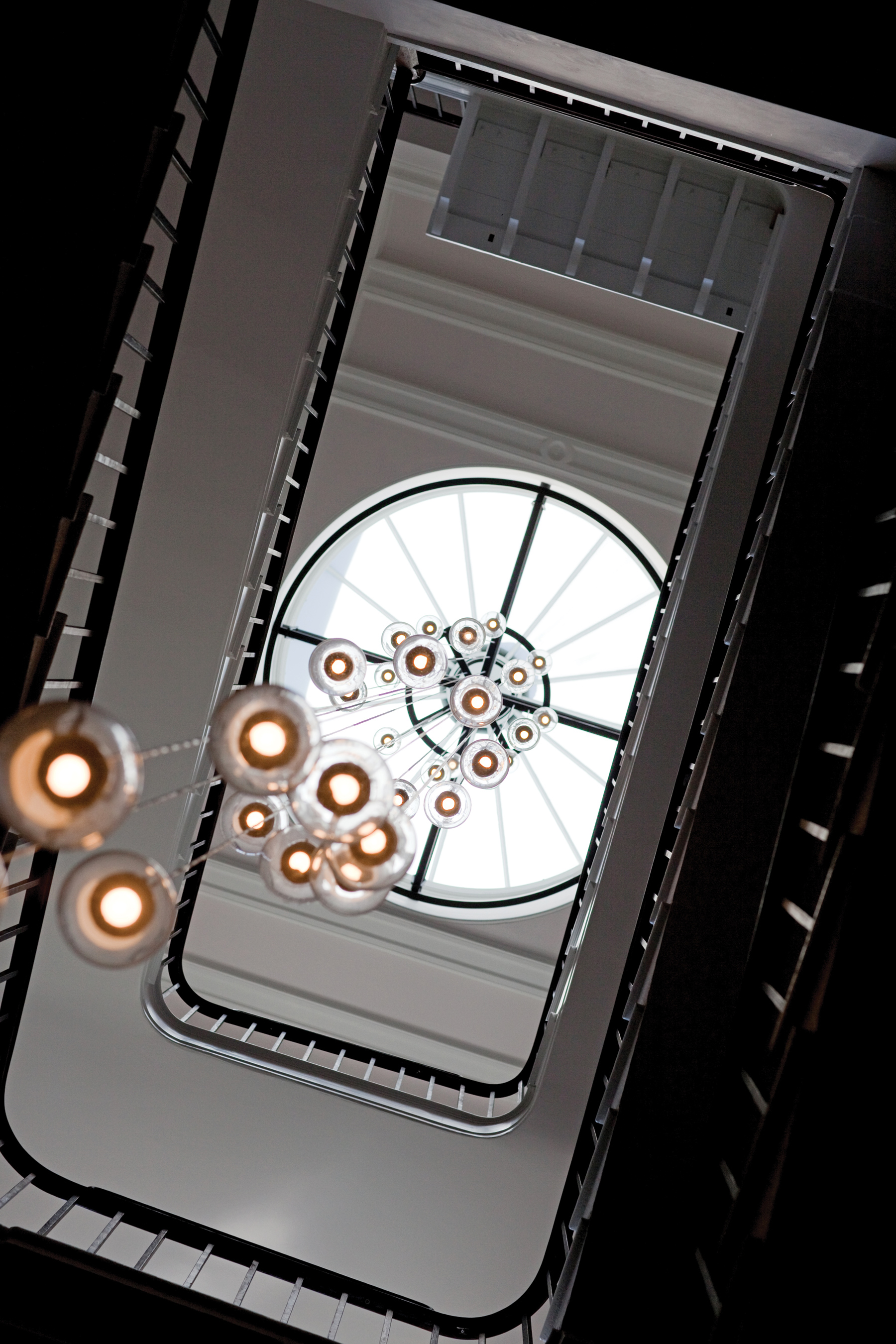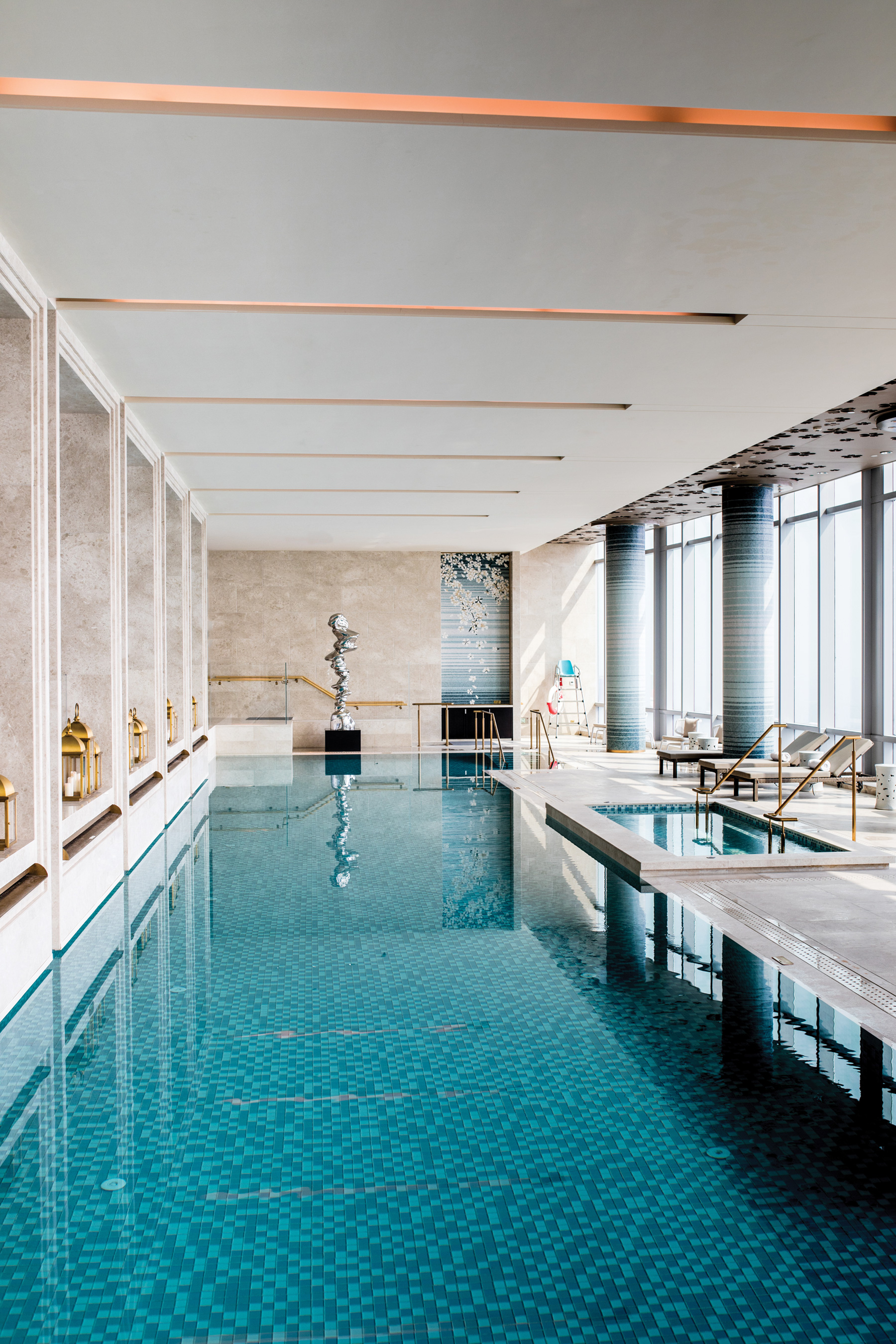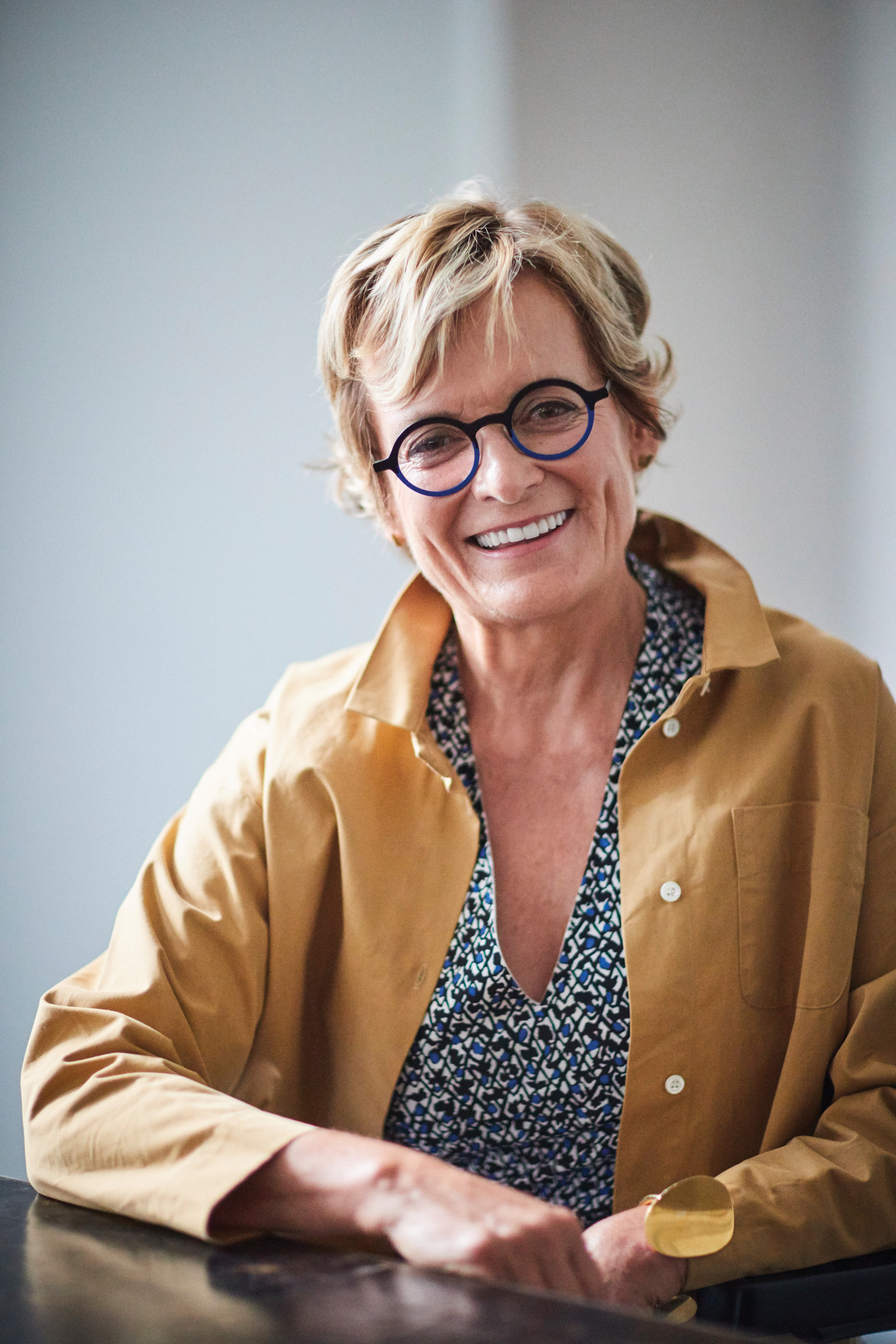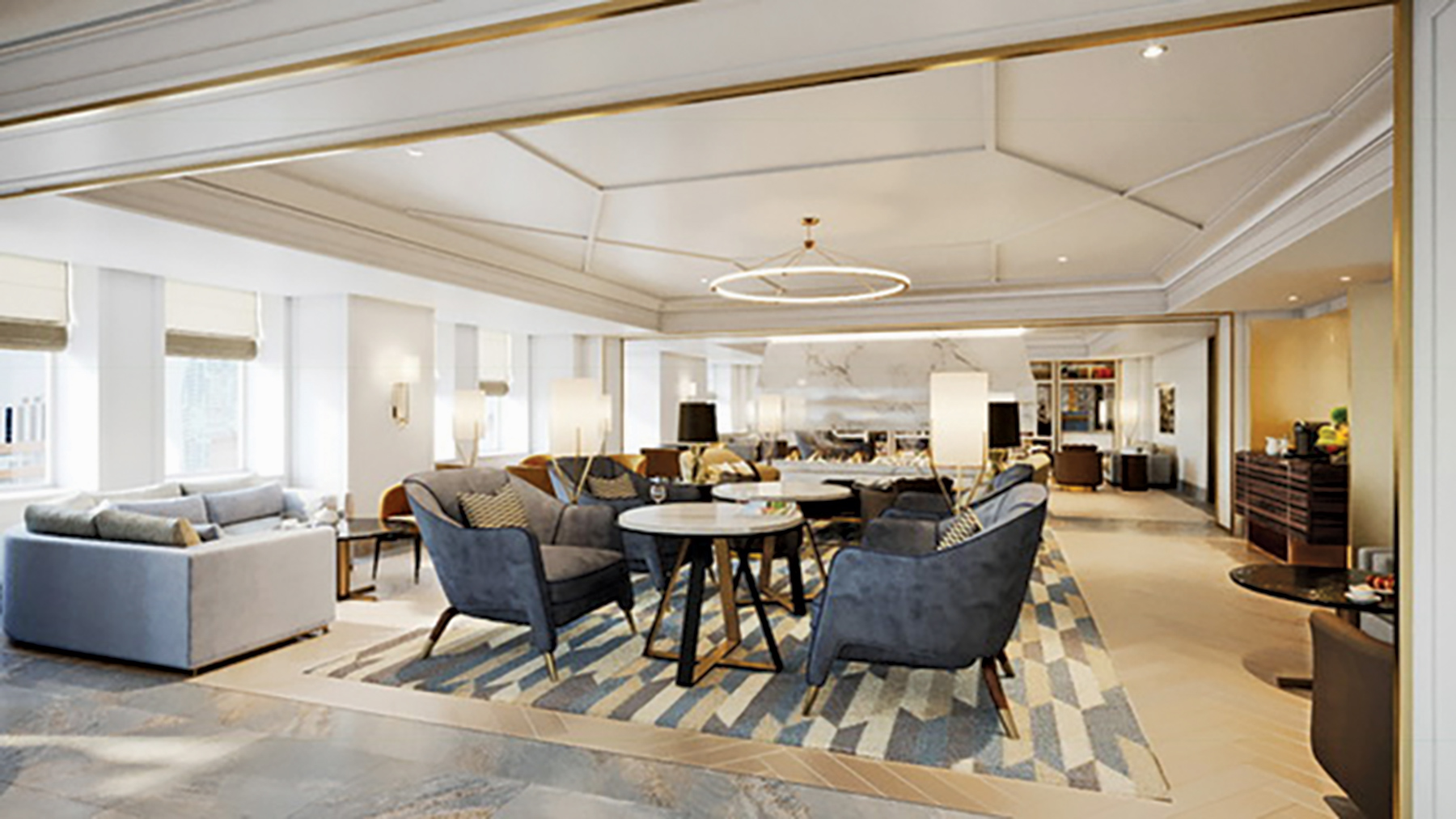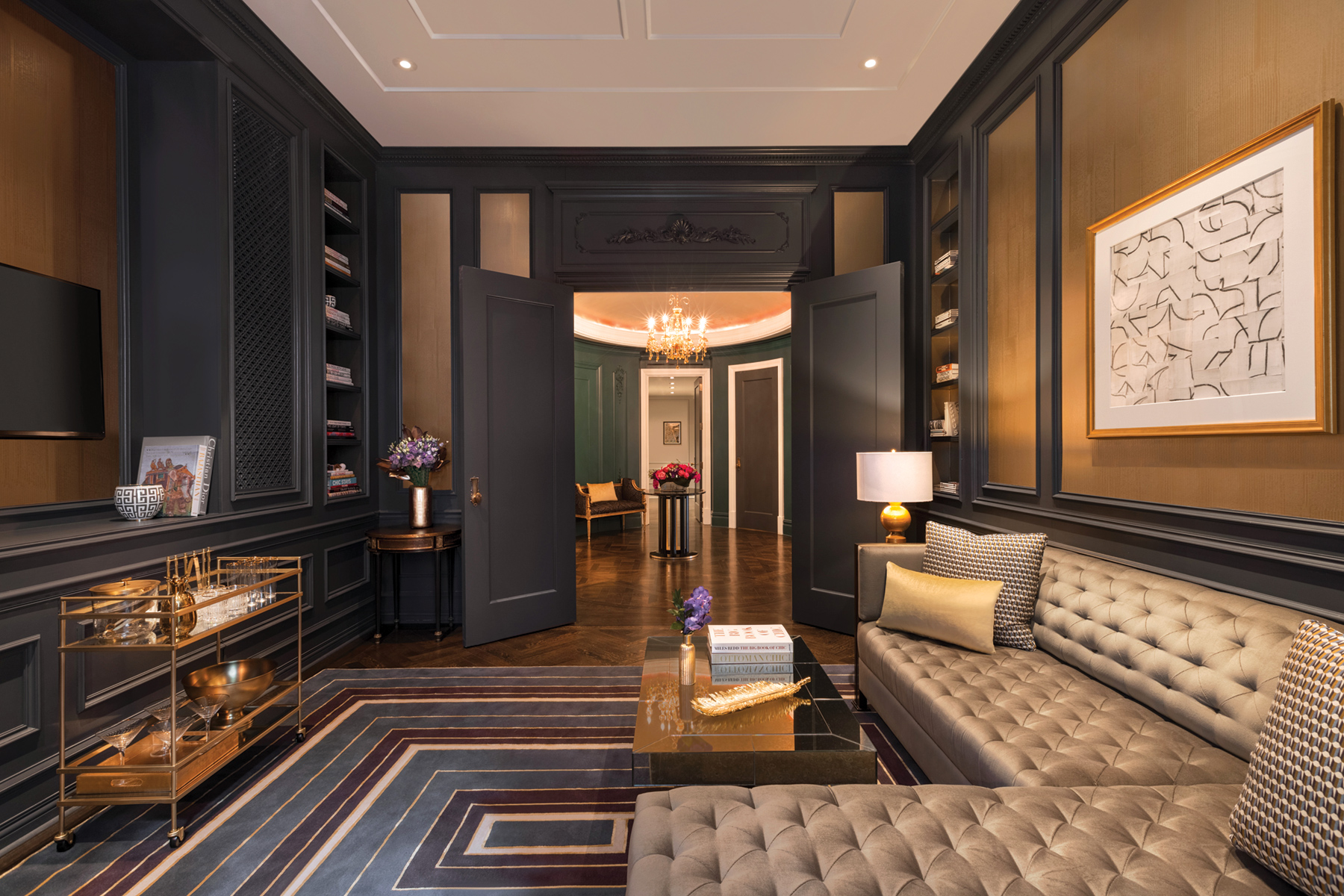For Alexandra Champalimaud, a hotel is far more than just a place for travellers to rest their heads. To this designer, who has spent the last three decades creating some of the most luxurious hotel interiors in the world, these spaces are reflections of the history,
culture and art that surround them as much as the people who inhabit them. Yes, a hotel’s primary purpose is to provide food, lodging and comfort for weary travellers, but they have an altogether grander purpose in this designer’s mind — to provide a sense of place.
“I refuse to do a hotel that wouldn’t have a sense of place,” Champalimaud says over the phone from her home in Litchfield, Connecticut. “It’s not what we do — because nobody in the entire universe wants to go somewhere and feel like they could be anywhere. You want to know where you are.” This is the underlying philosophy of Champalimaud’s eponymous design studio that she founded in Montreal in the 1970s and now runs from its headquarters in a Gothic skyscraper in Lower Manhattan. From Raffles Singapore to The Beverly Hills Hotel to the newly unveiled and renovated Fairmont Royal York in Toronto, Champalimaud doesn’t just design beautiful hotels, she creates destinations.
Her keen eye for detail is in part a product of her upbringing. Born in Portugal and educated in England and Switzerland, Champalimaud was exposed from an early age to a wide breadth of cultural influences. “I’m from a family and a place where I was surrounded by beauty,” she says of her idyllic childhood in Lisbon and Cascais, a seaside town known for its beaches and 16th-century citadel. “Where I’m from is a place where aesthetics run very high. These beautiful buildings and wonderful silver and incredible tiles, the charm of the country — you’re surrounded with beauty. You just suck it in by osmosis.”
After emigrating to Canada following the Carnation Revolution in Portugal, Champalimaud did not aim to create a niche practice in hotels, but after winning bids to design a Swissôtel in Boston and refurbish the famous Algonquin hotel in New York, she quickly developed a reputation as a competent specialist with an unusual knack for blending classical and modern.
“Like most things in life, you plan one direct route, and everything else happens and you
go the other way,” she says. “Jumping into hotels was a wonderful opportunity. It’s very multifaceted because you do everything from public spaces to restaurants to social engineering. It’s a fascinating medium for one’s creativity, like sitting down with a basket of delicious things all around you. There are so many great opportunities when designing hotels.”
Her reputation has grown exponentially in the decades since, and it has resulted in a roster of projects that reads like a bucket list of the world’s great hotels — The Waldorf Astoria, Hotel Bel-Air, The Dorchester, the St. Regis, The Gainsborough Bath Spa, The Plaza, The Stafford. They span the world, from the Four Seasons in Jakarta to The Little Nell, a boutique ski resort in Aspen. Despite their diverse settings, these hotels are all linked by Champalimaud’s unique approach to design that’s equal parts classical refinement and modern comfort, accented with bold patterns and rich colours inspired by the local environment. It’s an aesthetic that has come to define the modern hotel experience.
Few buildings in Canada, and fewer still in Toronto, can conjure the same sense of history as Royal York. When it came time to embark on a major renovation, Champalimaud — who has also lent her design skills to other Canadian icons such as Château Frontenac in Quebec City and The Queen Elizabeth in Montreal — naturally got the call. Built in 1929 by the Canadian Pacific Railway, the Royal York wasn’t just the tallest building in Toronto then, it was the biggest in the entire British Empire. It was a beacon of luxury, boasting more than 1,000 guest rooms, 10 ornately decorated elevators, a library, a concert hall and an enclosed roof garden. In its heyday, it hosted heads of state and society weddings, housed rock stars and screen idols, and, most famously, welcomed the Queen of England herself. With its stately stone façade and weathered copper eaves, the Royal York remains, almost a century later, an iconic grand dame in a rapidly evolving city.
For this landmark project, Champalimaud, along with lead designer Alan Mainer, was tasked with reimagining the hotel’s Fairmont Gold suites and transforming the 18th floor into a lounge and reception area for Fairmont Gold guests. As with all of her work on such historic properties, the result is an attempt to draw a line from the property’s gilded past to its vibrant present, all the while preserving the exceptional standards of luxury for which it has always been known. “The revitalization of these iconic hotels is something that Alexandra is sought after because of her sensitivity about finding their soul, their original story,” says Mainer. “How do we drag that into the 21st century and make it really relevant, uplifting and memorable?”
The result is an interior rich in bespoke furnishings and architectural details, including a mural in the 18th-floor reception area depicting Toronto’s skyline, hand-painted on canvas. “Honestly, she’s peerless,” says Judith Tatar, whose firm worked with Champalimaud to furnish the hotel’s artwork. “We understood the level of luxury demanded by Champalimaud and her team, and nothing less than a hand- executed mural would do.”
With most of the work on the Fairmont Royal York completed (the final Gold suites will be open to the public in June 2019), Champalimaud and her studio now turn their attention to a diverse slate of projects already underway. There’s a luxury hotel at Notre Dame’s football stadium in Indiana and a 53-storey Perkins+Will skyscraper in Atlanta, plus a line of upholstery fabrics by Holland & Sherry, carpets by The Rug Company and furnishings bearing the Champalimaud name. Fortunately for Alexandra Champalimaud, there will always be historic hotels in need of her unique sensibility, as well as travellers in search of luxury, comfort and, above all, a sense of place.
By Jeremey Freed – *This article originally appeared in INSIGHT: The Art of Living | Winter 2018
Photography by: Paul Barbera; Waldorf Astoria;



